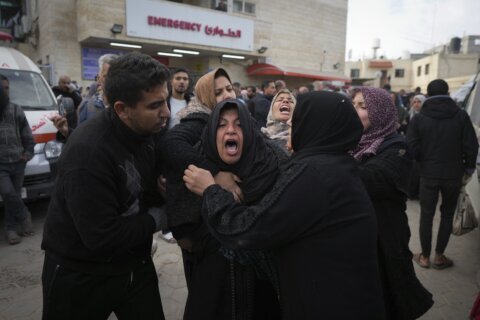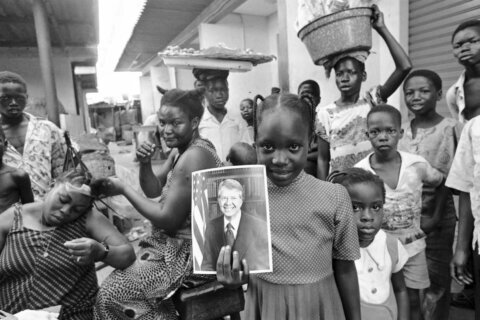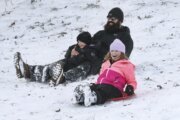BINAJ GURUBACHARYA
Associated Press
KATMANDU, Nepal (AP) — Rescuers widened their search Friday for trekkers stranded since a series of blizzards and avalanches battered the Himalayas in northern Nepal early this week leaving at least 29 people killed, officials said.
The government, meanwhile, announced the formation of a high-level committee that would monitor and coordinate rescue efforts following criticism that officials were not doing enough to help the hikers trapped along a popular trekking circuit.
With weather conditions improving, helicopters resumed the search Friday for stranded trekkers and were flying over a wider area, said Baburam Bhandari, the top government official of the Mustang district. Dozens of people have taken shelter in small lodges and huts dotted along the Annapurna trail, where deep snow has made it difficult to hike further.
Rescuers have taken 78 trekkers from Mustang and 157 from the neighboring Manang district since Wednesday.
Information Minister Minendra Risal said the new committee, ordered by the prime minister, would directly monitor the rescue operation and help wherever needed. The committee would coordinate among the army, police, local administrations and the private operators now involved in the rescues.
The Nepal government was criticized for not helping enough after the mountains were hit by bad weather and avalanches earlier this week, with its initial assistance limited to two army helicopters.
The Annapurna trekking route, 160 kilometers (100 miles) northwest of the capital, Katmandu, was filled with foreign hikers during the peak October trekking season, when the air is generally clear and cool. There were also many Nepalese on the trails because of local festivals.
Two trekkers from Hong Kong and 12 Israelis were airlifted Wednesday to Katmandu, where they were being treated at a hospital.
They said they survived by taking refuge in a small tea shop along the path.
“I was sure I was going to die on the way to the pass because I lost my group, I lost all the people I was with and I could not see anything,” said Linor Kajan, an injured Israeli who said she was stuck in waist-deep snow.
“One Nepalese guide who knows the way saw me and asked me to stay with him. And he dragged me, really dragged me to the tea shop. And everybody there was really frightened,” she said.
Another Israeli survivor, Yakov Megreli, said they tried to stay awake in the tea shop to stay warm.
“We tried not to sleep. We tried not to get hypothermia. It was a very frightening and awful situation,” he said.
Both talked to reporters outside a hospital in Katmandu where survivors were brought.
The blizzard, the tail end of a cyclone that hit the Indian coast a few days earlier, appeared to contribute to an avalanche that killed at least eight people in Phu village in neighboring Manang district. The dead included three Indian and four Canadian trekkers as well as three villagers, said government official Devendra Lamichane.
The foreigners’ bodies were buried in up to 2 meters (6½ feet) of snow and digging them out will take days, he said. Three Canadian trekkers who survived the avalanche were taken by helicopter to a shelter in a nearby town.
Authorities said five climbers were killed in a separate avalanche about 75 kilometers (45 miles) to the west, at the base camp for Mount Dhaulagiri. The climbers, two Slovaks and three Nepali guides, were preparing to scale the 8,167-meter (26,800-foot) peak, the world’s seventh tallest, said Gyanedra Shrestha of Nepal’s mountaineering department. Their bodies were recovered Thursday.
An avalanche in April just above the base camp on Mount Everest killed 16 Nepalese guides, the deadliest single disaster on the mountain. Climate experts say rising global temperatures have contributed to avalanches in the Himalayas.
Copyright 2014 The Associated Press. All rights reserved. This material may not be published, broadcast, rewritten or redistributed.







